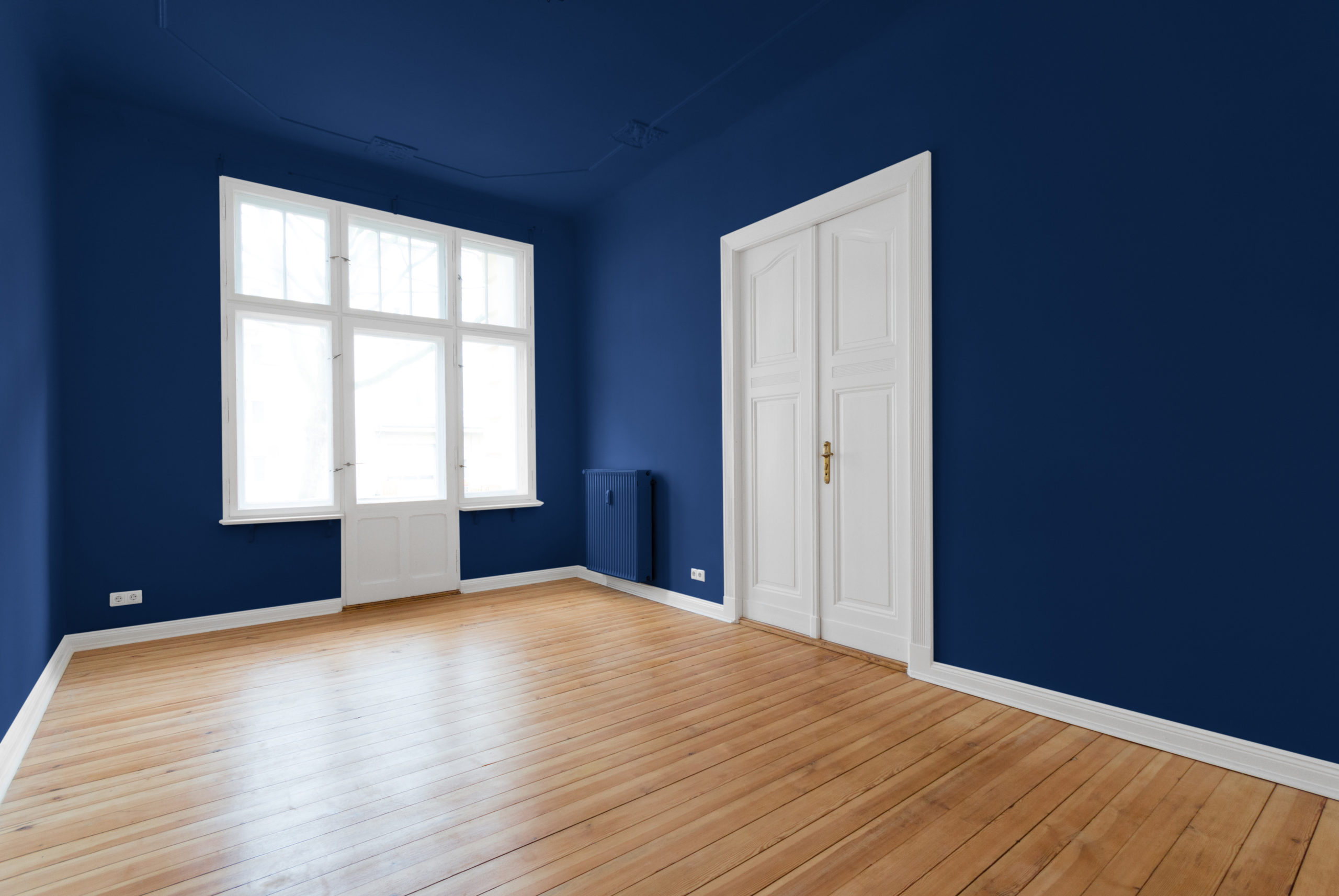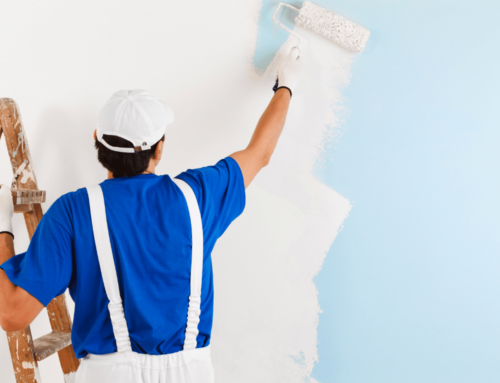A common misconception is that darker colors will cover, or “hide” an underlying color better than lighter ones. This is a natural assumption, given that if you want to hide something in a document you use a marker to “black it out”. But with paint, just the opposite is true. Darker colors are mixed in a paint “base” that is more translucent than lighter colors. Consider the following analogy. A glass of cola is dark brown, but you can shine a light through it. Now take a glass of milk and pour a little cola into it and stir. The result is a light brown colored mixture, but because of all the solids in the milk, you cannot shine a light through it. Darker colored paints have less “body” and therefore take two or more coats. In the case of a third coat, this is usually in the form of a “foundation” primer that lets the color develop properly. Red colors, for example, often are painted using two color top-coats over a gray primer coat.
Existing color, or more precisely, the difference between the existing color and the new color is another consideration. If the new color is “close” to the existing color, then generally only one coat is needed, even in the case of darker colors. Creating a substantial color change, or painting over white usually requires a second coat to prevent the underlying color from “peeking through”.
If the existing paint has much sheen to it (i.e. its is satin, semi-gloss, or even full gloss), then the first coat of the new paint may “slide” leaving streaks that require a second coat to cover properly. The sheen of a paint is determined by how smooth it is on the surface. The more sheen the paint has, the smoother its surface is. The new paint may not be able to “bite” into the smoother surface and may then be carried away by the brush or roller leaving a streak.
The grade of new paint being used has a bearing two ways: thickness of the paint film left after the “carrier solvent” — water in the case of latex paints — evaporates, and volume of solids in the paint. Paints with a higher volume of solids and/or that leave a greater film thickness simply deposit more material to hide the underlying color. As discussed last month, premium grade paints have higher volumes of solids than lesser grade paints, so spending a few more dollars on paint might mean the difference of not needing a second coat.
Lastly, application method has a bearing on how many coats are required. Brushes tend to push paint away from them, leaving brush streaks that may need a second coat to cover. Rollers can rapidly apply a lot of paint to a surface, but to a certain extent, they are also pushing paint away. Rolling paint onto a surface with a satin or higher sheen will probably illustrate the “sliding” problem mentioned above. Spraying a surface is a great way to apply a uniform coat of paint without the streaking or sliding that comes from methods that push paint around and require some “bite” into the existing surface. But spraying is not well suited for non-solid surfaces (e.g. wrought iron fences or lattice work), and is generally not the preferred method interior repaint work. It also requires specialized equipment and skills.
Need a Painting Company in MA? Trust Michael P. McCarthy Painting, Inc.
Searching for a Painter Near Me or Painting Contractor Near Me? You have come to the right place for a professional painting contractor ma. We will handle all of the prep work for you. We are reputable company that will be sure to do a job that is perfect, professional, and clean. Call us today to schedule a free no obligation in home consultation or fill a form on our website.
Home Painters MA
Residential Painting Contractor






